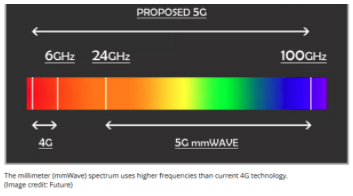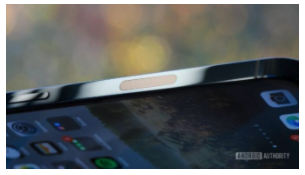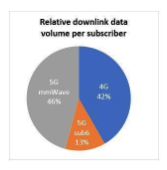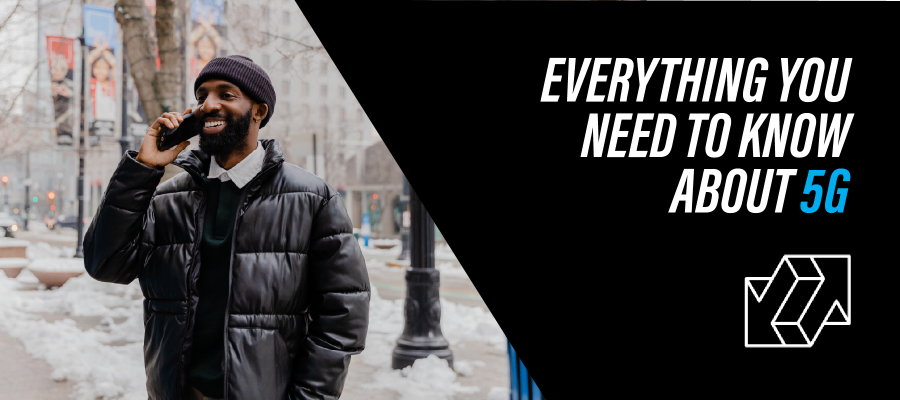With the launch of the iPhone 12 in 2020 5G technology went mainstream. By the end of 2021, 5G smartphones will account for 17 percent of all smartphones sold in North America, and 5G mobile subscriptions in the US are expected to increase from 41million in 2021, to 168million by 2024.¹
What is 5G?
5G is the fifth generation of wireless communication that delivers faster data rates, lower latency and greater capacity. For example, you could download a full-length movie in a few seconds. This is achieved with new data encoding methods and the use of new higher frequency transmission frequencies.

Transmissions between 26 and 100 gigahertz (GHz) are known as millimeter wave (mmWave). The little oval on the side of the iPhone 12 and 13 is actually a window for the 5G mmWave antenna.

Because mmWave has a very short transmission distance of a few hundred feet and needs a direct line of sight with the receiving device, 5G requires a much denser network of cell towers. However, 5G towers are so small they can be fitted to street lights and telephone poles.
¹ https://www.statista.com/topics/7600/5g-in-the-united-states/#dossierKeyfigures

Carriers are still building out their networks. For example, Verizon has high-speed 5G in 87 cities, and is often deployed in high-density locations such as airports and stadiums.² But only 46% of the data generated by 5G capable phones is transmitted on mmWave.³

Concerns
The two largest commercial jet makers, Boeing and Airbus, have warned against a plan to deploy new 5G wireless networks at 4 GHz (also known as C-band), because it could interfere with airplane radar altimeters, leading to catastrophic failure of a critical safety function.⁴
There are also concerns about the negative health effects of 5G. The health effects of radiofrequencies below 6 GHz (like those of 3G and 4G LTE) have been extensively studied. Known biological effects include, but are not limited to, lower male fertility and potential carcinogenicity.⁵
However, little is known about the biological impact of mmWave 5G. Low frequency RF, like that in 4G LTE, penetrates human tissue up to a couple of centimeters, but millimeter wave RF is absorbed within a few millimeters. So logically one could assume millimeter waves would pose less risk to deeper organs such as the brain. But the downside of shallow penetration is exponentially greater absorption in skin, sweat glands, peripheral nerves, eyes and testes.
₂https://www.verizon.com/about/news/verizon-5g-ultra-wideband-rapid-c-band-expansion ¹https://www.qualcomm.com/news/onq/2021/12/15/5g-mmwave-network-advantage-how-measure-it-right ²https://www.reuters.com/business/aerospace-defense/boeing-airbus-executives-urge-delay-5g-wireless-deployment-2021-12-21/ ⁵https://www.iarc.who.int/wp-content/uploads/2018/07/pr208_E.pdf
To date there has been limited research (107 experimental studies as of March 2021) on the health effects of mmWave 5G and it consists of in vitro or animal studies that are of low practical value when developing science-based exposure limits or public health guidelines. It is not possible to prove that 5G is safe.⁶
Scientists are also concerned about the impact of 5G mmWave frequencies on birds and insects.⁷
With the current uncertainty and lack of scientific knowledge, especially in the millimeter wave range, some scientists and public health experts worry we are hastily unleashing an untested technology without fully understanding the health effects.
⁶https://blogbrhp.medium.com/5g-is-testing-the-limits-of-trust-8180d578e140 ⁷https://www.nature.com/articles/s41598-018-22271-3
